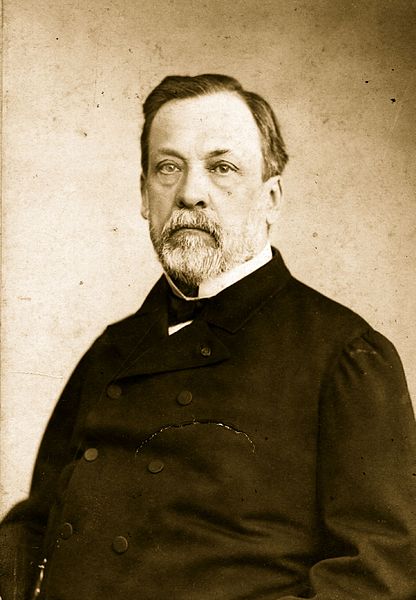French chemist Louis Pasteur (1822-1895) has to be ranked up there as one of the greatest contributors to the areas of microbiology and infectious diseases.
A painter and a teacher, Pasteur studied chemistry in his spare time which eventually led to professorships at several French universities and contributions to the wine and silkworm industries.

Refuting spontaneous generation
The famous “swan necked” flask experiment that Pasteur used in refuting spontaneous generation worked like this: a fermentable juice was placed in a “swan neck” flask, and after sterilization the neck was heated and drawn out as a thin tube taking a gentle downward then upward arc, resembling the neck of a swan. The end of neck was then sealed. As long as it was sealed, the contents remained unchanged.
If the flask was opened by nipping off the end of the neck, air could enter the flask, but the microbes and dust could not reach the liquid, being trapped in the curved neck of the flask, which remained sterile despite exposure to air.
Silkworms
While studying silkworms, he discovered several diseases that were killing off the silkworms in the cocoon and damaging the silk industry. He was able to examine the worms microscopically and used only uninfected worms for breeding. He taught silkworm farmers how to detect infected worms with a microscope so they could select disease free worms. His work in the silkworm industry was an important step in proving the germ theory of disease.
Alcohol fermentation and Pasteurization
He discovered that carefully selected yeasts made good wine, but that mixtures of other microorganisms competed with the yeast for sugar and made the wine taste oily and sour. His work in the wine industry later lead to his namesake method called pasteurization. This technique of heating the liquid that spoils easily, milk for example, heated to kill most bacteria and molds already present within them.
Rabies
He did a lot of work in the field of vaccines, but he is most well known for his work with rabies. He used dried spinal cord from rabbits infected with the disease. He tested it on animals with success but wanted to test it on a human.
In 1885, a 9 year old boy who was severely mauled by a rabid dog and his mother showed up to Pasteur’s lab. The boy, who was doomed to die the horrible death from rabies, was the first person to get immunized against rabies. He survived and remained in good health for the rest of his life. Pasteur became a legend as newspapers from around the world reported this and others saved by his rabies vaccine.
The list could go on and on with Louis Pasteur. He later became director of the famous Pasteur Institute in 1894. He died the next year as a national hero.

